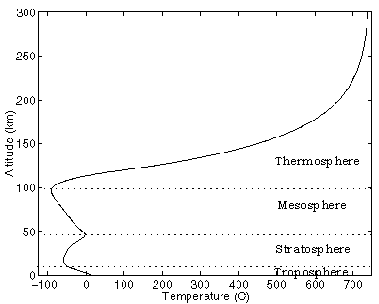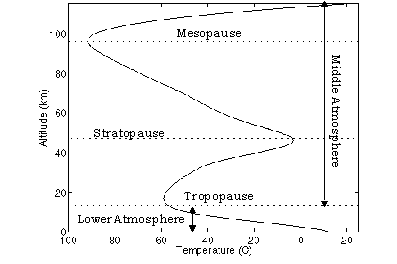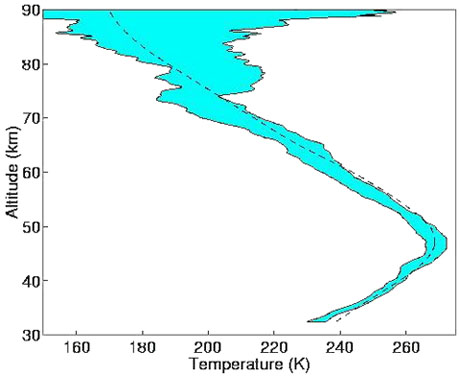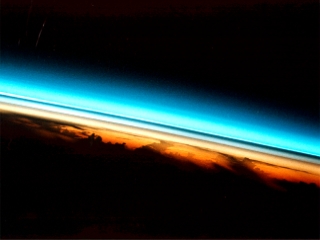
|
|
Vertical Structure of Earth's TemperatureR. J. Sica The horizontal variations in surface temperature have a maximum difference of about 80 °C between the warmest and coldest temperatures. As a function of altitude temperature varies by more than 800 °C between the ground and the top of the atmosphere. Figure 1 introduces us to the atmospheric "spheres." This figure shows how temperature varies with height. Each region of the atmosphere, as well as the solid Earth and the magnetosphere, is part of geospace, the area of space perturbed by Earth's environment. The atmospheric regions can be thought of as spherical shells or spheres which surround Earth. The top of each sphere is called a "pause". For instance, the lowest part of the atmosphere, from the surface to about 12 km, is called the troposphere. The top of the troposphere, where the temperature reaches a local minimum, is called the tropopause. The troposphere, where we spend most of our lives, seems awfully small on this scale, so let's magnify the troposphere and the middle atmosphere (the stratosphere and mesosphere; Fig 2).  The variation of temperature with height in Earth's atmosphere. The horizontal dotted lines delineate the atmospheric "spheres." Above 300 km the temperature is essentially constant with height.  The variation of temperature with height in Earth's lower and middle atmosphere. The dotted horizontal lines indicate the "pauses" while the vertical solid lines indicate the distinction between the lower and middle atmosphere. The upper atmosphere (that is the region above the mesopause) includes the electrically neutral thermosphere and its ionized component, the ionosphere. The atmospheric temperature profile exhibits three basic heating regions.
In between are two cooling regions.
The lidar's laser transmitter fires a beam of light into the sky. A small fraction of this light is scattered back to the receiving telescope. To find out how to obtain a temperature from the back-scattered light, click here. The figure below shows a night's measurements of temperature by the Purple Crow Rayleigh-scatter Lidar. The shaded blue area shows the variability of the temperature over a night's measurements. This geophysical variability of temperature is much greater than the statistical error of the measurements. The dashed line of the figure shows an average temperature profile for the same geophysical conditions form an empirical atmospheric model. Knowledge of the differences between the measured and model temperatures is important for understanding the dynamics of the atmosphere.  References
|
